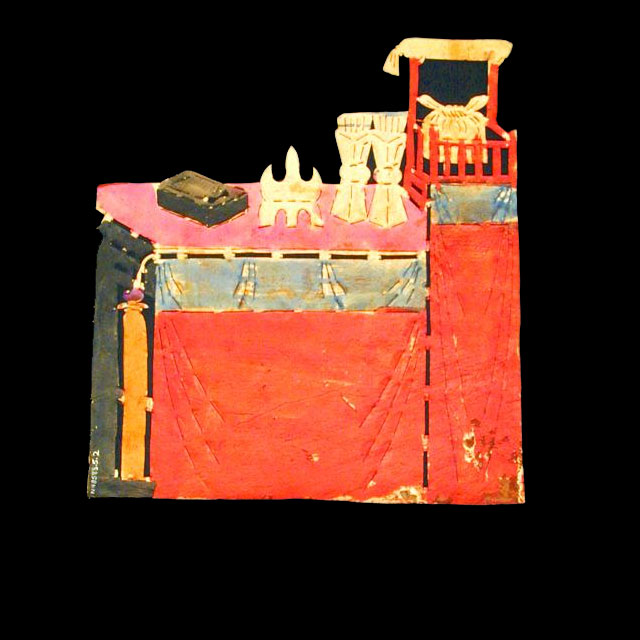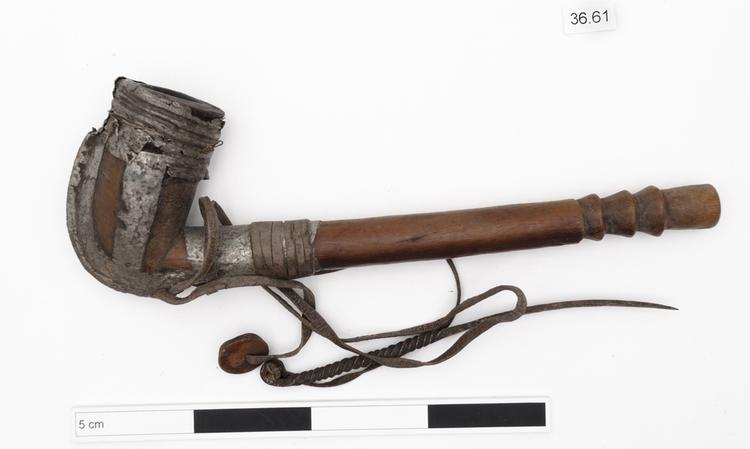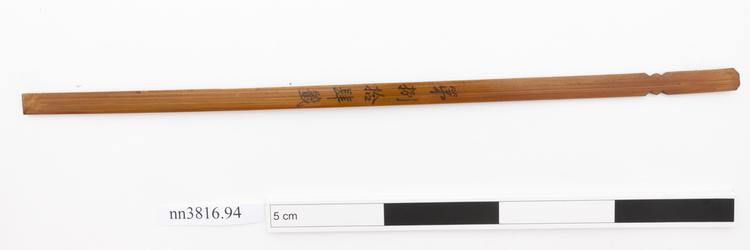
One of 29 shadow puppets telling the tale of the Tiger Story. This puppet represents the magistrate's table. The table is draped with red cloth on the front part and with black cloth at the side. There is a golden coloured streamer hanging from one corner, and blue edging below the table's surface. On the table top are four objects,a box, two items together which may be candle-sticks and a fourth item which has three prongs. The table has a raised, canopied area containing what appears to be a bag.
The set of 29 shadow puppets with the accompanying script tell The Tiger Story. The collection was brought back to the UK by missionaries and bought by the Museum from the Church Missionary Society in 1955. The puppets include people, animals, furniture and spirits. The story tells of a tiger who ate the only son of an old woman, thereby depriving her of her only means of support. The old woman persuaded the local magistrate to issue an arrest warrant for the tiger. The task of catching the tiger was given to a man called Li Len, who accepted the responsibility whilst drunk. Despite searching the hills with hunters for a month, Li Len could not find the tiger. On his return, the magistrate beat him up and Li Len sought respite in the local temple. The tiger appeared there and taking pity on Li Len allowed himself to be captured. Before the magistrate, the tiger agreed to become a son to the old woman in return for his freedom. He visited the old woman daily, bringing her items of value which enabled her to live better than she had when her real son was alive. When she died, the tiger visited her grave and howled.






